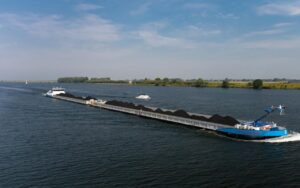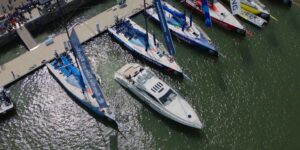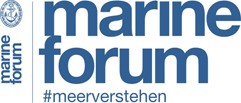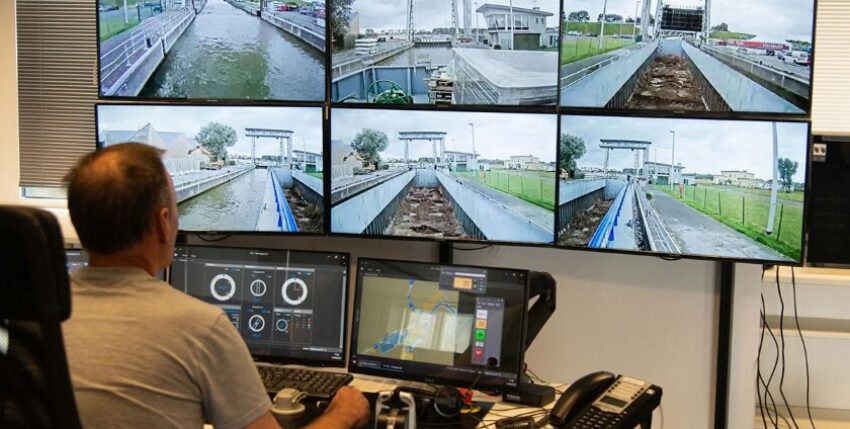Duisburg: Now that the first pilotless "ghost ships" are sailing on Belgium's waterways, ships are set to follow on German waterways. In future, the captains will no longer be on board, but on land.
For a few weeks now, a Belgian captain has been sitting at a desk in the former Haniel offices in Duisburg-Ruhrort. Wearing headphones in front of four computer terminals and six camera screens, he steers an inland freighter across the Belgian Plassendale-Nieuwpoort Canal and the River Yser, over 300 kilometres away. Two controls are all the Fleming needs to keep the unmanned "Watertruck 8" loaded with excavated earth on course.

Shortage of skilled labour
For the first time, inland waterway vessels will be operated remotely from the Duisburg control centre. The trial operation officially started on 28 February. The operator "Häfen und Güterverkehr Köln" (HGK-Shipping) is the market leader with over 350 of its own and chartered inland vessels. The technology, which is currently also being tested by the shipping company Deymann from Haren an der Ems, comes from the Belgian technology and service provider SEAFAR, based in Antwerp, which specialises in remote-controlled and crew-reduced inland shipping.
By founding this German initiative, the three companies want to promote (partially) autonomous inland waterway transport on German waterways. The project is necessary and essential, explains HGK-Shipping. Between 2008 and 2018, the profession shrank by 24 per cent in Germany. Furthermore, a third of inland vessel captains are over 55 years old and will therefore leave the labour market in the next ten years.
Savings opportunities
The "office workstation" is intended to make the workplace more attractive and at the same time more efficient for future barge captains. Two to three freighters can also be controlled simultaneously via a screen and the investment in remote technology has paid for itself in less than three years for the shipping company, according to SEAFAR.
The market for the planned digitalisation is huge. Around 8,000 inland vessels currently transport goods across Europe's rivers and canals. They usually spend a lot of time in the harbour. During these loading and waiting times, skippers, two of whom always work on board in 24-hour shifts, must be paid. Remote-controlled captains, on the other hand, are no longer paid after docking.
Test areas
Down the Rhine from Bonn, HGK is launching three remote-controlled freighters that still have skippers on board for safety reasons - as a back-up in case an emergency situation requires intervention. Similar tests are also underway on the Mittelland Canal near Münster and Osnabrück and on the Elbe Lateral Canal, on which Salzgitter AG transports its steel goods to Hamburg. Competitor Rhenus is also currently working on a remote solution for its inland vessels. The almost 50-year-old "Ernst Kramer" was selected as the test object. Rhenus presented the remote-controlled ship to a wide audience for the first time at the 13th National Maritime Conference 2023 in Bremen. Interested parties were able to follow live how the 105-metre-long freighter navigated the port of Duisburg and the Ruhr estuary remotely via mobile radio.
Authorisation reservations
Unlike in Belgium, where three unmanned freighters are already operating in the hinterland of Ostend and further ships with a reduced crew between Liège and Antwerp, the German authorities are still struggling with authorisations due to a lack of experience. The partners are therefore working on utilising the permits already received for the test operation on the Lower Rhine and designating further sailing areas with the authorities for this pioneering approach. They are currently in the application phase for sections in the north-west German canal area, on the Mittelland Canal and for further sections of the Rhine.
First success
The Central Commission for the Navigation of the Rhine (CCNR) has created a new legal basis to promote automated shipping. In future, it will be possible to temporarily deviate from the Rhine Police Ordinance (RheinSchPV) for certain pilot projects in the field of automated shipping. For example, from the obligation to man the helm.
Long-term goal
HGK-Shipping predicts that in five years' time, freighters in Germany will be able to set sail completely without a skipper on board; in calm waters such as canals or harbour basins, autonomous operation without a helmsman on land is even conceivable. However, there have only been isolated pilot projects to date. For example, in August 2023, when the catamaran "MS Wavelab" set sail autonomously for the first time in the Kiel Fjord; controlled only by the Anschütz control centre on land via remote control, but with a captain on board for safety reasons.
marineforum.online reported on this on 16 Aug 2023: Anschütz: Autonomous "Wavelab" on the fjord
Volvo subsidiary Penta also presented a docking system for ships years ago that enables autonomous parking in harbours. Equipped in this way, accidents in harbours could be a thing of the past in a few years' time.

Was there anything else?
According to SEAFAR, remote control is technically secure thanks to the sensors, cameras and laser distance measuring devices used, as well as the 4G and 5G networks used simultaneously by three providers.
However, the HGK shipping company still only wants to proceed step by step with the application of the technology so as not to overburden the authorising shipping authorities, ship insurers and certification companies.
So (semi-)autonomous inland navigation is coming, but the question remains: How fast?
Source: Handelsblatt, Hafenzeitung










